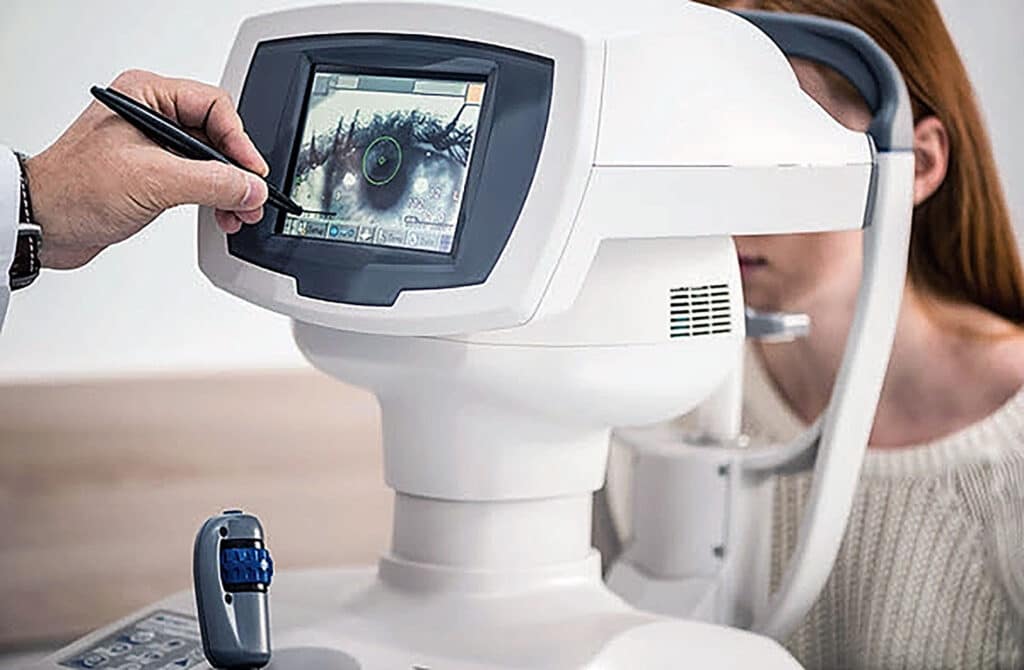
Fuchs’ corneal dystrophy is an inherited condition that progressively impacts the inner layer of the cornea, which is the clear surface at the front of the eye. As this condition reduces the number of healthy corneal cells, the cornea may swell and thicken over time, resulting in cloudy or blurred vision.
Understanding the early signs, available treatments, and new research can help patients protect their vision and plan for future care.
What Is Fuchs’ Corneal Dystrophy?
Fuchs corneal dystrophy often starts quietly. In the early stages, patients may notice glare, light sensitivity, or blurry vision in the morning that clears up as the day progresses. This occurs because fluid builds up in the cornea while you sleep and evaporates once you open your eyes.
As the disease progresses, vision may stay blurry throughout the day. This condition most often affects people over 50, though genetic factors can cause earlier onset.
Symptoms of Fuchs’ Corneal Dystrophy
-
Blurred or cloudy vision
-
Difficulty seeing in low-light or glare situations
-
Morning vision that slowly improves during the day
-
Pain or discomfort in advanced cases due to corneal swelling
Treatment Options
Fuchs’ corneal dystrophy treatment depends on the stage of the disease and the extent of vision changes.
Eye drops and ointments
Hypertonic saline drops or ointments can help draw out excess fluid, temporarily reducing corneal swelling and improving comfort.
Endothelial keratoplasty (DSEK, DMEK)
These advanced procedures replace only the diseased inner corneal layer with healthy donor tissue. Patients typically recover faster and achieve clearer vision than with older full-thickness transplants.
Penetrating keratoplasty (PK)
In severe cases, a traditional full-thickness corneal transplant may be necessary.
Descemet’s stripping only (DSO)
A newer procedure that removes diseased cells, allowing healthy surrounding cells to spread and cover the cornea.
Artificial cornea (keratoprosthesis)
An artificial cornea can restore vision in patients who are not candidates for donor tissue.
Discussing these options with a trusted corneal specialist ensures you receive the right treatment plan for your stage of disease.
Fuchs’ Corneal Dystrophy In Relation to Other Eye Conditions
Fuchs’ corneal dystrophy often overlaps with or complicates other common eye conditions. Patients with Fuchs’ may also experience dry eye disease, which can worsen irritation and blurry vision as the cornea becomes less efficient at maintaining a healthy tear film. Because the cornea plays a vital role in focusing light, cataracts may appear more visually disruptive in patients with Fuchs’, and surgery to remove them sometimes requires special consideration of corneal health. In addition, the disease can complicate the management of glaucoma, since both conditions affect the eye’s ability to maintain clear vision and may influence surgical decision-making. Finally, people with keratoconus, another corneal condition that changes the cornea’s shape, may face added diagnostic and treatment challenges if Fuchs’ is also present. For these reasons, patients with Fuchs’ dystrophy benefit from comprehensive, personalized care to protect their vision and guide the right timing for treatment.
Advances in Research and Care

-
Gene-based therapies are designed to slow or prevent progression.
-
Cell-based treatments that may expand donor corneal tissue to help more patients.
-
Advanced imaging tools such as Scheimpflug tomography help doctors measure corneal thickness and track changes over time.
Protecting Vision With Prevention & Modern Treatments
While there’s no cure yet, treatments and research are moving fast. Patients now have more tools than ever to manage symptoms, preserve sight, and prepare for future therapies. Advances in surgery, genetic research, and diagnostic imaging give patients renewed confidence about their long-term vision.
Take the next step toward clearer vision today. Schedule a comprehensive eye exam with Barnet Dulaney Perkins Eye Center and talk with our specialists about the best treatment options for your unique needs. With expert care and ongoing innovation, living with fuchs corneal dystrophy doesn’t mean losing sight of what matters most.

